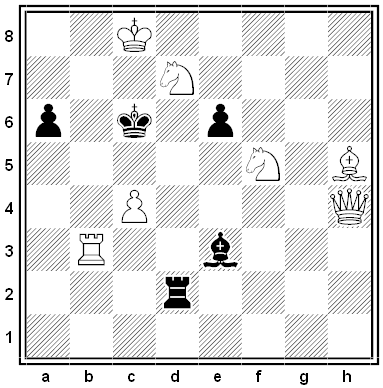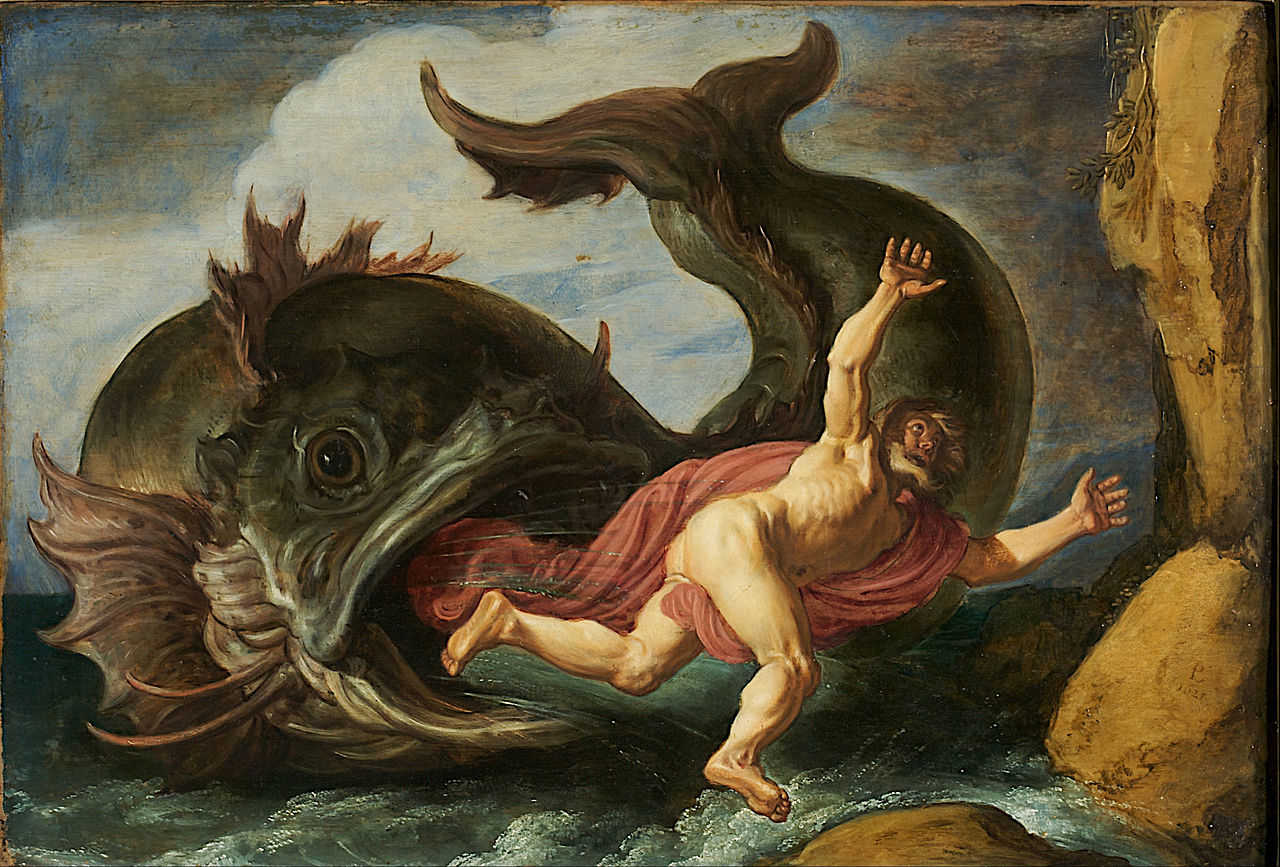
From Francis Healey, A Collection of Two Hundred Chess Problems, 1866. White to mate in two moves.

From Francis Healey, A Collection of Two Hundred Chess Problems, 1866. White to mate in two moves.
In 1928, when London’s Society of Model Engineers received word that the Duke of York would be unable to open its annual exhibition, acting secretary W.H. Richards said, “Very well, I will find a substitute: it is a mechanical show, let us have a mechanical man to open it.”
So they did. Attendees that September were greeted by a robot named Eric who could stand up, bow, look left and right, deliver a four-minute opening address “with appropriate gestures,” and sit down. The speech, imparted by a radio signal, was described as “really sparkling” — apparently literally, as blue sparks shot from Eric’s teeth. From the Model Engineer and Light Machinery Review:
The Exhibition of 1928 has been one of the most successful we ever had. … The ‘Robot’ was a continuous attraction; he drew thousands of people to see his remarkable performance. … It is estimated that he rose and bowed to his audiences more than a thousand times during the week, and he not only amused the majority of his visitors, but positively amazed and bewildered them with his clever movements and conversation.
In 1929 Eric toured America, where he visited Harvard and MIT and informed interviewers that he did not gamble, drink, or run around at night. That’s reassuring, because eventually he disappeared — London Science Museum curator Ben Russell told the Telegraph, “No one quite knows what happened to him, whether he was blown up or taken to pieces for spare parts.” So, working from old photographs, the museum rebuilt him, and he appeared, debonair as ever, in a 2017 exhibition:


In 1950, four patriotic Scots broke in to Westminster Abbey to steal the Stone of Scone, a symbol of Scottish independence that had lain there for 600 years. In this week’s episode of the Futility Closet podcast we’ll follow the memorable events of that evening and their meaning for the participants, their nation, and the United Kingdom.
We’ll also evade a death ray and puzzle over Santa’s correspondence.

Early Christian theologians had to contend with an awkward question: On Resurrection Day, what happens to people who have been devoured by birds, beasts, and fish? If the substance of my body has been assimilated by another creature, how can I reclaim it in eternity?
The answer came from Athenagoras in the second century. He declared that human flesh was “non-natural” and could not be absorbed by other creatures:
What is against nature can never pass into nourishment for the limbs and parts requiring it, and what does not pass into nourishment can never become united with that which it is not adapted to nourish. Then can human bodies never combine with bodies like themselves, to which this nourishment would be against nature, even though it were to pass many times through their stomach, owing to some most bitter accident.
Jonah, after all, had not been digested by the great fish that had swallowed him. So there was hope for those who had been devoured: They would be vomited or excreted, and God could then reassemble what he had once made.
This resolved the question, but it made for an unpleasant motif in Christian iconography in which beasts, birds, and fish vomit up feet, hands, limbs, and heads — the latter bearing happy faces.
(D. Endsjø, Greek Resurrection Beliefs and the Success of Christianity, 2009.)
Consider two experiments — in each you’re asked to make a choice between two gambles:

In the first experiment, most people choose Gamble 1A over Gamble 1B. In the second, most people choose Gamble 2B over Gamble 2A. Neither of those choices, in itself, is unreasonable. But economist Maurice Allais pointed out in 1953 that choosing 1A and 2B together does appear inconsistent. To see why, refine the table a bit further:

Now it’s clear that, within each experiment, both gambles give the same outcome 89 percent of the time. The only thing to distinguish them, then, is the remaining 11 percent — and when we focus on those segments, Gamble 1A matches Gamble 2A, and 1B matches 2B. Any given individual might tend to prefer a sure thing or a gamble, but here, it seems, most people prefer the sure thing in Experiment 1 and the gamble in Experiment 2.
This doesn’t mean that most people are irrational, Allais argued, but rather that expected utility theory might not reliably predict their behavior.
In a lecture at the University of Edinburgh in the 1970s, artificial intelligence pioneer I.J. Good pointed out that a robot cricket player doesn’t necessarily need a complex knowledge of physics in order to catch a ball — instead it might emulate humans, who follow a simple rule: “If the ball appears to be rising in the sky, run backwards. If it is falling, run towards it.”
Similarly, Hope College mathematician Tim Pennings noticed that his Welsh corgi, Elvis, seemed to follow the optimal path when chasing a ball thrown into Lake Michigan — Elvis seemed to realize that he ran faster than he swam, and so could minimize his retrieval time by racing intelligently along the beach before jumping into the water. But how did he make these judgments?
“We confess that although he made good choices, Elvis does not know calculus,” Pennings wrote. “In fact, he has trouble differentiating even simple polynomials.”
(Timothy J. Pennings, “Do Dogs Know Calculus?” College Mathematics Journal 34:3 [2003], 178-182.)
Mystery sound frustrates people in a west Forest Grove neighborhood. Where it could be coming from? #LiveOnK2 @ 11pm pic.twitter.com/p0inj5TBr2
— Chris Liedle (@chrisliedle) February 16, 2016
Make of this what you will: In February 2016 a “mechanical scream” was repeatedly heard at night near Gales Creek Road in Forest Grove, Oregon. Described variously as a “giant flute played off pitch” and “a bad one-note violin solo broadcast over a microphone with nonstop feedback,” the sound typically lasted from 10 seconds to several minutes. It annoyed the residents, but authorities determined there were no problems with gas lines in the area, and the police department announced that the sound didn’t pose a safety hazard.
It ended as mysteriously as it had started — Pacific University physicist Andrew Dawes, who had been mapping the locations where the noise had been heard, plotted his last point on February 27, 2016. He said the results were inconclusive and didn’t suggest any single location. The police and fire departments have closed the case; Forest Grove Fire Marshal Dave Nemeyer said he suspected the noise to be “a faulty attic fan or heat pump.”

I believe it then to be quite simply true that books have their own very personal feeling about their place on the shelves. They like to be close to suitable companions, and I remember once on coming into my library that I was persistently disturbed by my ‘Jane Eyre’. Going up to it, wondering what was the matter with it, restless because of it, I only after a morning’s uneasiness discovered that it had been placed next to my Jane Austens, and anyone who remembers how sharply Charlotte criticised Jane will understand why this would never do.
— Hugh Walpole, These Diversions: Reading, 1926
Here’s a little oddity that I just came across. John Conway’s Game of Life is a familiar recreation that takes place on a grid of squares. At the start each square is either “alive” or “dead,” and then on each turn the status of each square is updated:
This produces some surprising creatures, such as the “glider,” a self-propagating “spaceship” that travels diagonally:

Gliders can be generated by an oscillating factory called a “gun”:

Here’s the oddity: It would seem that each gun will produce an infinite fleet, since its gliders all depart in the same direction. But that’s not true if the grid of squares is written on a torus — then the gliders snake around the figure and destroy their maker:
![]()